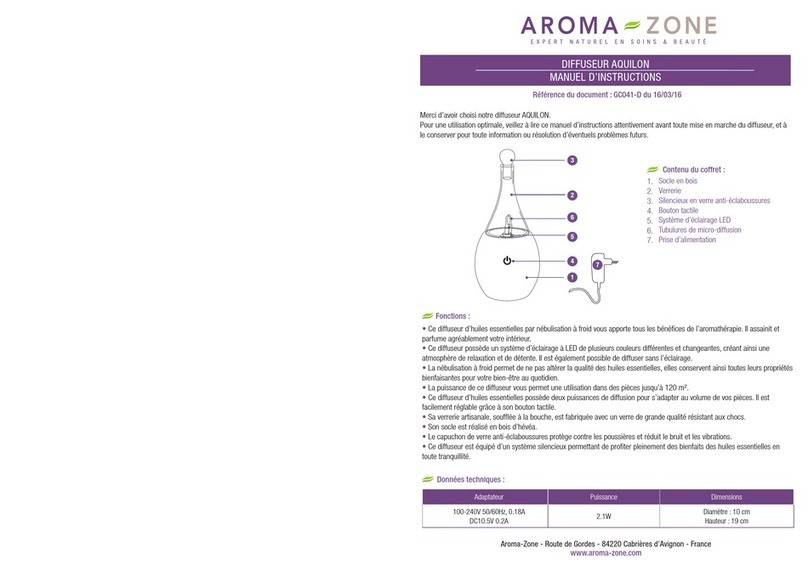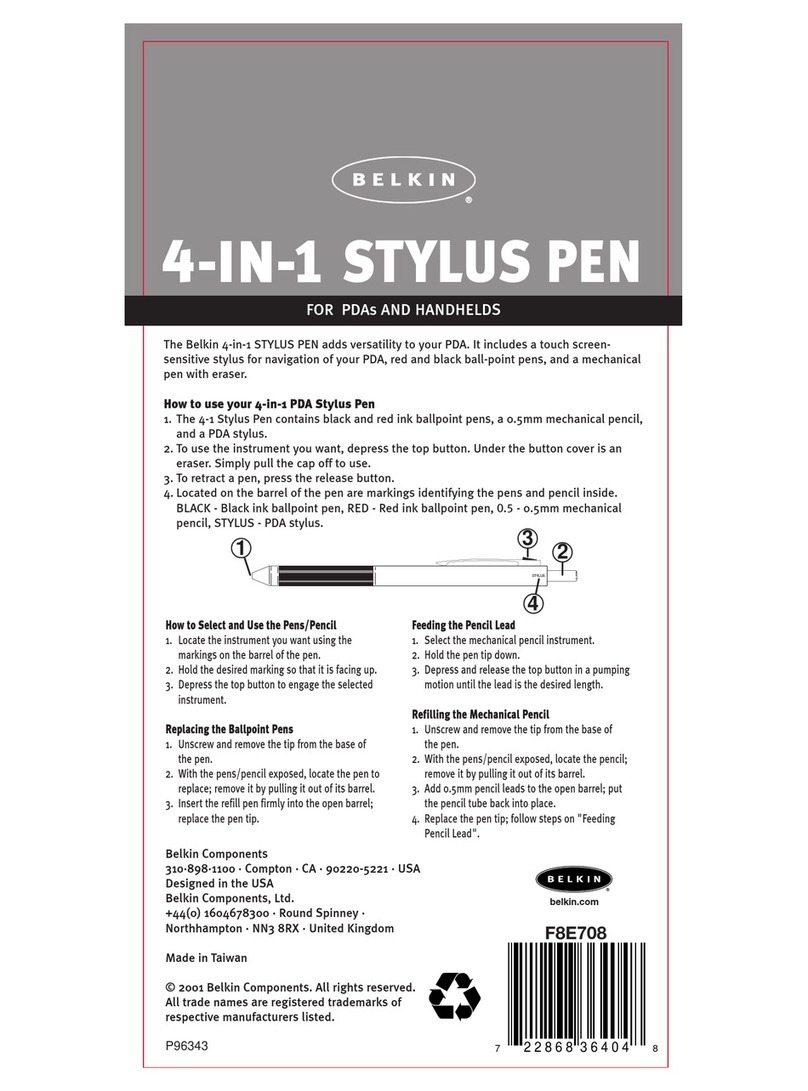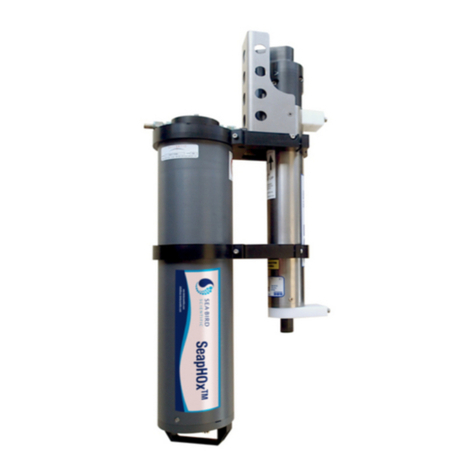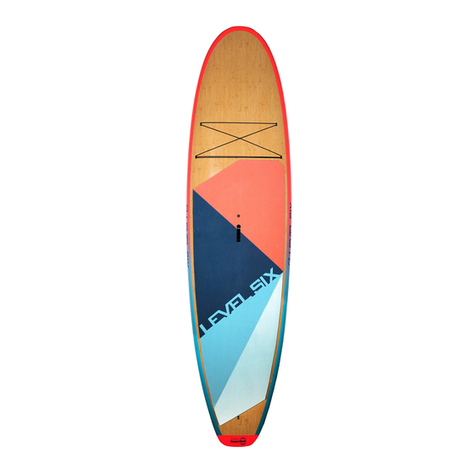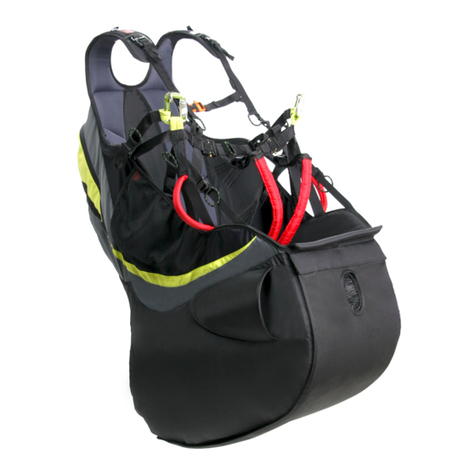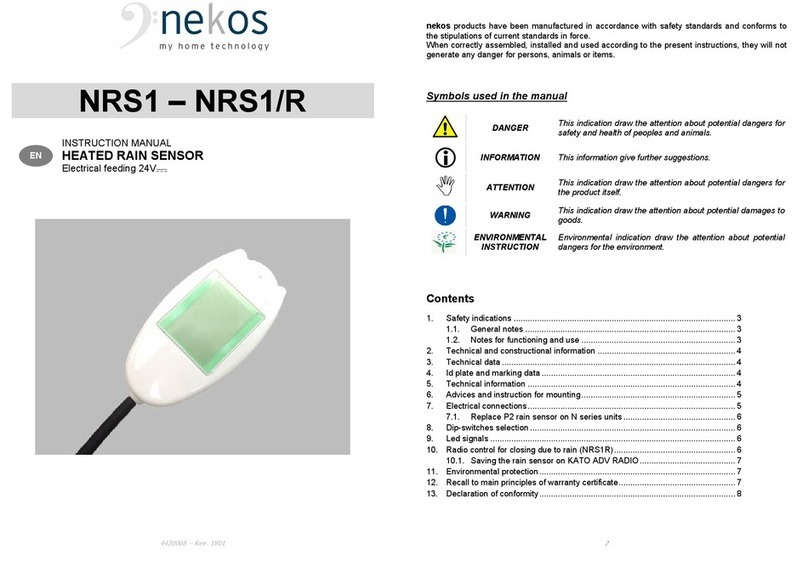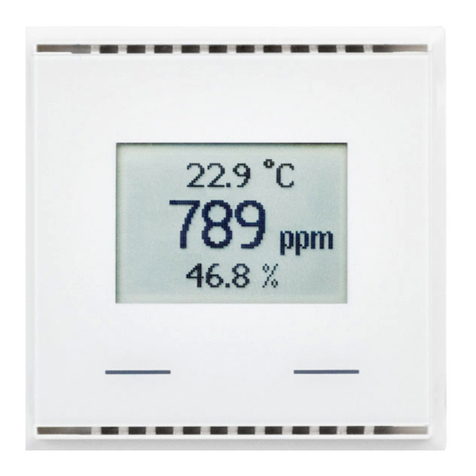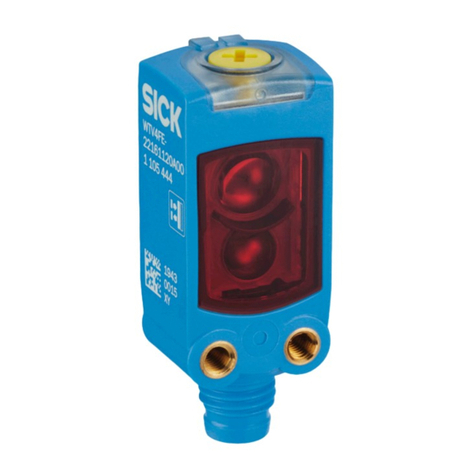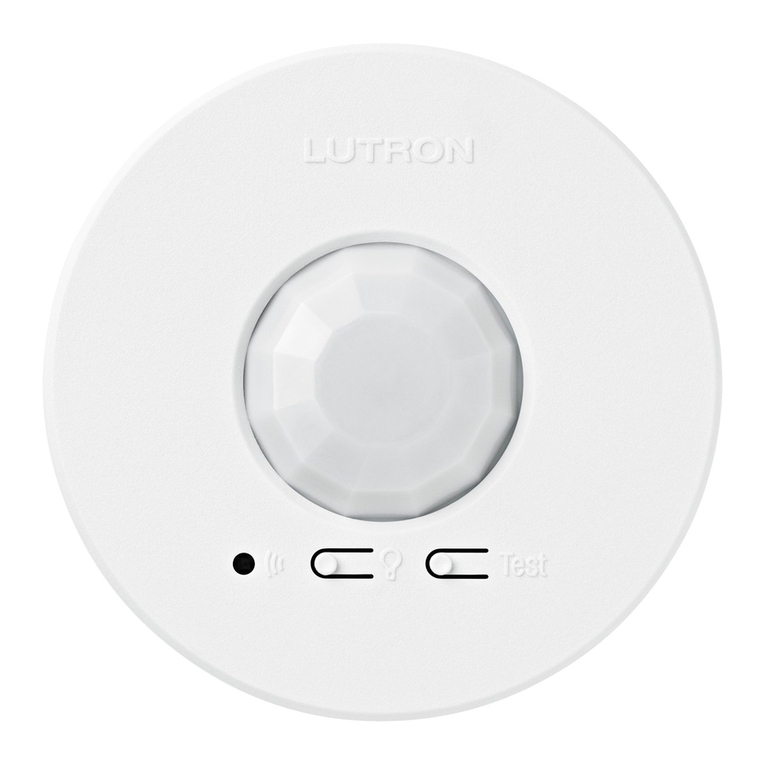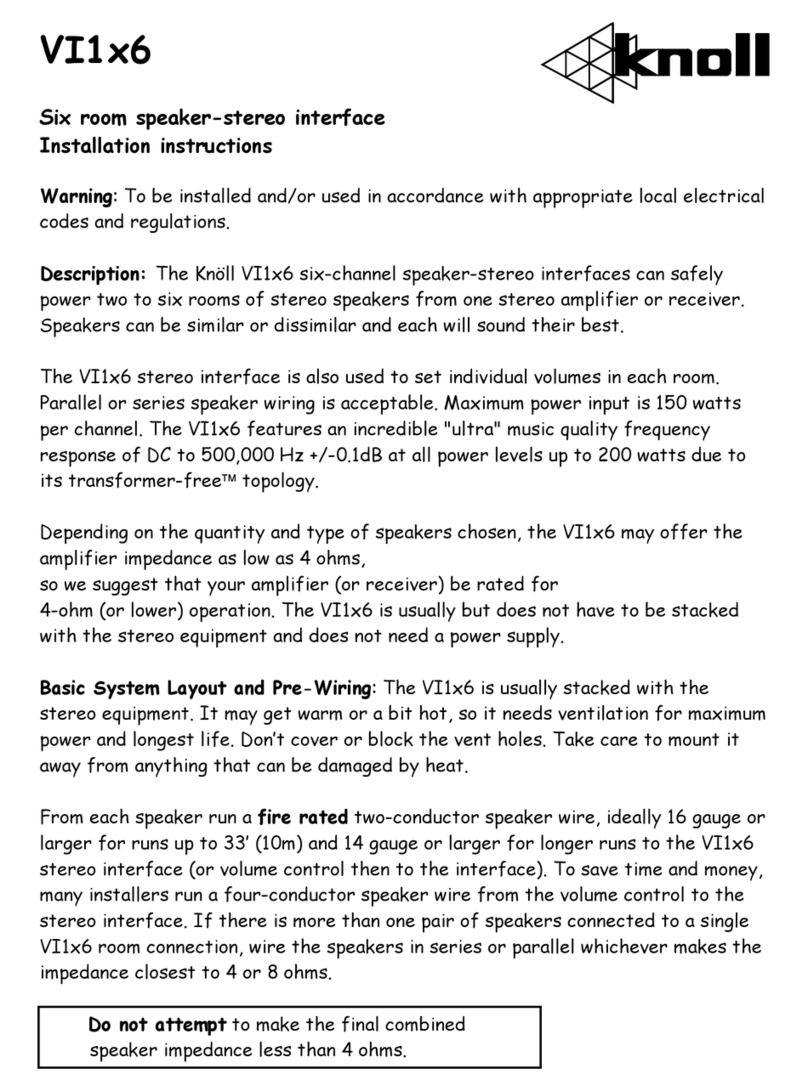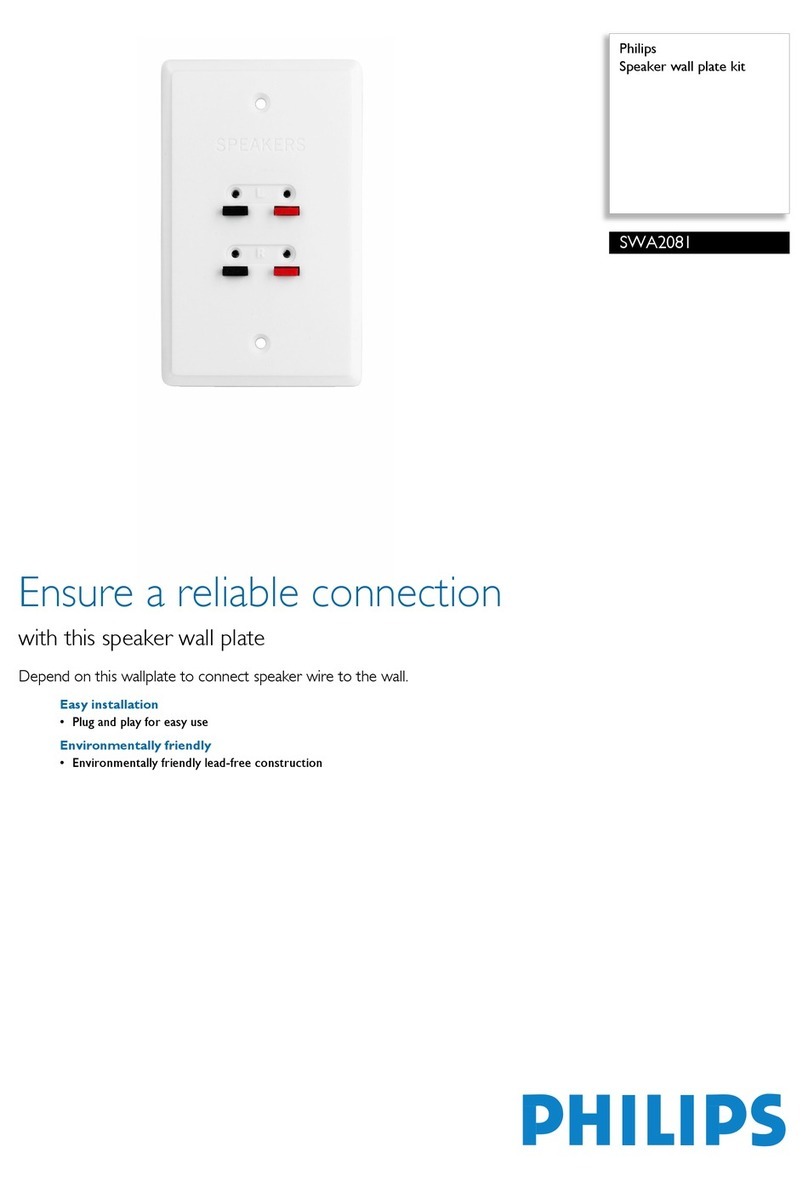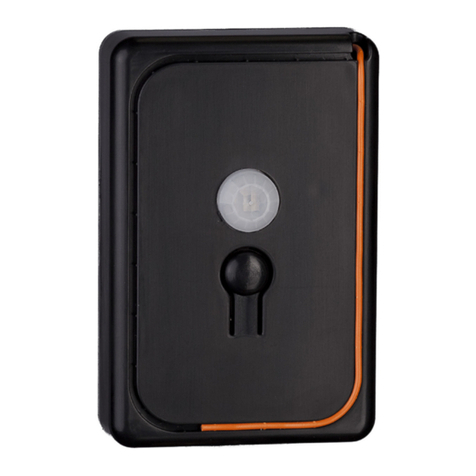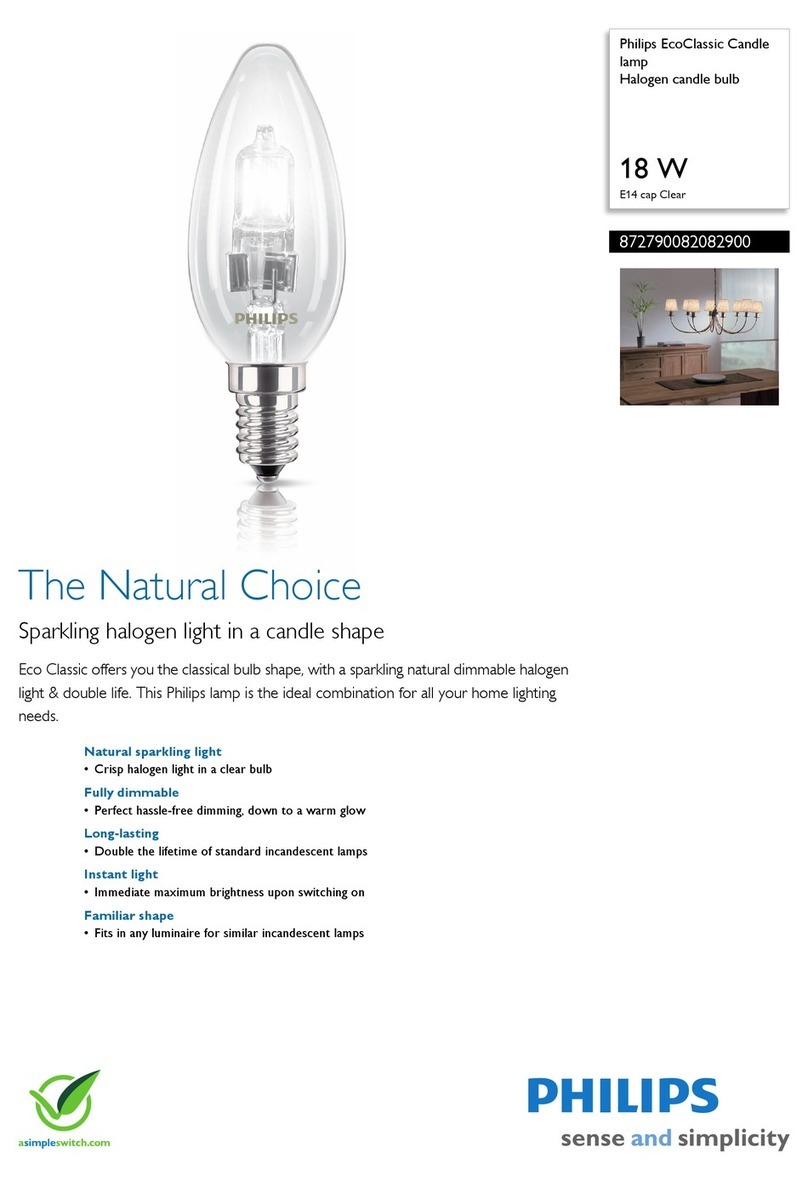Slackline Industries BOSS LINE KIT User manual

SLACKLINE INDUSTRIES 2-INCH MANUAL-ENGLISH
THIS MANUAL CONTAINS IMPORTANT SAFETY INFORMATION. BEFORE USING THE SLACKLINE,
READ THIS MANUAL CAREFULLY AND MAKE SURE YOU UNDERSTAND AND AGREE TO ALL
WARNINGS, CAUTIONS, INSTRUCTIONS, AND SAFETY RECOMMENDATIONS. PERIODICALLY
REVIEW THE INFORMATION IN THIS MANUAL AND INSPECT YOUR SLACKLINE REGULARLY
FOR SIGNS OF EXCESS WEAR OR DAMAGE. DO NOT USE THE SLACKLINE UNLESS YOU
ACCEPT ALL RISK OF INJURY AND/OR DEATH THAT MAY RESULT FROM YOUR USE.
MANUAL
ENGLISH
ESPAÑOL
FRANÇAIS

SLACKLINE INDUSTRIES 2-INCH MANUAL-ENGLISHSLACKLINE INDUSTRIES 2-INCH MANUAL-ENGLISH
1. WARNING! THE SLACKLINE CAN BE A DANGEROUS PIECE OF EQUIPMENT EVEN WHEN
USED PROPERLY:
PARENTS OF MINORS AND MINORS: Minors should not use the slackline unless they are under
constant competent adult supervision. Make sure that the slackline is only installed in areas where
minors cannot access the slackline without such adult supervision. Minors should never use the
ratchet or adjust the tension of the slackline at any time.
The slackline was developed solely for use by one adult at a time to improve his or her balance
by slowly walking across the slackline over a flat, even and soft landing area clear of obstacles,
people, projections, or nearby hazards. The slackline must only be used in the manner described in
this Manual.
USING A SLACKLINE CAN BE A DANGEROUS ACTIVITY THAT MAY RESULT IN SERIOUS INJURY
AND/OR DEATH EVEN WHEN USED PROPERLY. USE AT YOUR OWN RISK AND ALWAYS USE
COMMON SENSE.
• Make sure that the slackline is attached only to anchors as described in section 3.1 below.
• Do NOT attach the slackline to any anchor point that is not fixed or too weak to safely anchor
and use the slackline. For example, do NOT attach the slackline to one or more cars,
www.slacklineindustries.com contains additional information.
• Make sure the ground and landing area over which the slackline is suspended is flat, even,
and soft. You will be stepping and perhaps falling onto it!
• Do NOT set the slackline at any height above 18 inches (50 centimeters).
• Make sure there are no obstacles, hazards, people, or projections near the slackline that
could injure you in a fall. Only use the slackline at locations without any nearby hazards and/
or dangers.
• Always wear sturdy, tightly laced athletic shoes with flat rubber soles.
• Do NOT walk the slackline in sandals, shoes with lugged soles or barefoot.
• Keep all spectators at least 9 feet (3 meters) from the slackline.
• Never use the slackline at dusk or night or in wet or icy conditions.
• Do NOT allow more than one person to use the slackline at any time.
• Do NOT exceed 300 pounds (136 kg) in weight on the slackline at any time.
THIS SLACKLINE IS NOT INTENDED FOR PERFORMING ANY TRICKS, INCLUDING BUT NOT
LIMITED TO JUMPING, FLIPPING, ETC. ATTEMPTING OR PERFORMING TRICKS SIGNIFICANTLY
INCREASES RISK OF INJURY AND/OR DEATH.
This slackline is not impervious to damage. THE SLACKLINE MUST BE PROPERLY MAINTAINED
AND INSPECTED BEFORE EVERY USE. FAILURE TO INSPECT AND MAINTAIN THE SLACKLINE
BEFORE EACH USE MAY RESULT IN INJURY AND/OR DEATH. THE USE OF ANY PARTS NOT
PROVIDED BY THE MANUFACTURER ARE NOT RECOMMENDED AND MAY DAMAGE THE
SLACKLINE, IMPACT PERFORMANCE, SHORTEN THE LIFE-SPAN OF THE PRODUCT, AND CAUSE
INJURY AND/OR DEATH.
1.1 FAILURE TO:
• USE COMMON SENSE,
• USE THE SLACKLINE AS RECOMMENDED IN THIS MANUAL, AND/OR
• HEED THE WARNINGS AND INSTRUCTIONS IN THIS MANUAL
MAY SIGNIFICANTLY INCREASE THE RISK OF SERIOUS INJURY AND/OR DEATH.
WHEN ASSEMBLED, THE SLACKLINE IS UNDER SIGNIFICANT TENSION WHICH MAY EQUAL OR
EXCEED 1500 lbs (7 kN/700 kg). DUE TO THE HIGH TENSION OF THE SLACKLINE, GREAT CARE
MUST BE EXERCISED WHEN USING THE SLACKLINE TO DECREASE THE RISK OF INJURY AND/
OR DEATH. OVERLOADING THE SLACKLINE WITH MORE THAN 300 POUNDS (136 kg) AND/OR
MORE THAN ONE PERSON INCREASES THE TENSION AND MAY CAUSE THE SLACKLINE AND/OR
RATCHET TO FAIL, RESULTING IN INJURY AND/OR DEATH.
Check local laws regarding slacklines to see where and how you may lawfully use the slackline.
Slackline use on public property is illegal, restricted, or banned in some cities and states.
You may see people on TV or on the Internet performing tricks or stunts on a slackline. These
are people who have been practicing for a long time, who are highly skilled, and who accept
the risk of all injury and/or death. THE MANUFACTURER AND RESELLERS OF THIS SLACKLINE
STRONGLY ADVISE AGAINST ATTEMPTING TO PERFORM ANY TRICKS ON THIS SLACKLINE
AND SPECIFICALLY DISCLAIM ANY AND ALL RESPONSIBILITY AND LIABILITY FOR ANY DEATH,
PARALYSIS, INJURY, AND/OR DAMAGE TO ANY PERSON OR PROPERTY THAT MAY OCCUR, THAT
ARISES OUT OF, OR IS IN ANY WAY RELATED TO THE USE OF THIS PRODUCT.
1.2 WARRANTY:
This product is warranted against any material or manufacturing defect for one (1) year from the
purchase date as stated on a valid receipt. THIS WARRANTY DOES NOT COVER OR INCLUDE
ANY DAMAGE OR DEFECT CAUSED BY: NORMAL WEAR AND TEAR, MODIFICATIONS OR
ALTERATIONS, INCORRECT SET-UP OR STORAGE, POOR MAINTENANCE, AND/OR DAMAGE DUE
TO ACCIDENTS, NEGLIGENCE, OR MISUSE (INCLUDING BUT NOT LIMITED TO ANY USE NOT
EXPLICITLY APPROVED IN THIS MANUAL).
1.3 WEAR NOT RELATED TO WARRANTY CLAIMS:
• Wear on the reinforced loop is expected and not taken into warranty consideration. Always
inspect the slackline before any use and make sure the material under the loop protection is
intact.
• Wear on the print of the slackline is expected and excluded from warranty claim.
• Wear on the slackline that is caused by incorrect set-up or use is excluded from warranty
claim.
1.4 CARE INSTRUCTIONS:
The slackline webbing can be cleaned using lukewarm water and a mild soap if needed. Rinse
thoroughly with clean water and allow to dry completely before storing. Do not submerge metal
ratchet; clean only with standard machine lubricant. Always rinse slackline webbing with clear
freshwater after use in saltwater.
Always ensure the slackline is completely dry before storing.
Other than as described above, THE MANUFACTURER, SELLERS, AND RESELLERS OF THIS
PRODUCT MAKE NO OTHER REPRESENTATIONS AND/OR WARRANTIES, EITHER EXPRESS OR
IMPLIED, REGARDING THE PRODUCT, INCLUDING WITHOUT LIMITATION, ANY WARRANTIES
AS TO MERCHANTABILITY, QUALITY, OR FITNESS FOR A PARTICULAR PURPOSE. THE
MANUFACTURER, SELLERS, AND RESELLERS SHALL NOT BE LIABLE IN ANY WAY WHATSOEVER
FOR SPECIAL, INDIRECT, CONSEQUENTIAL, OR INCIDENTAL DAMAGES, WHETHER BASED ON
BREACH OF CONTRACT, BREACH OF WARRANTY, TORT (INCLUDING NEGLIGENCE), PRODUCT
LIABILITY OR OTHERWISE, EVEN IF THEY HAVE BEEN ADVISED OF THE POSSIBILITY OF SUCH
DAMAGES. THE SLACKLINE USER AGREES THAT HIS OR HER FULL REMEDY AGAINST THE
MANUFACTURER, SELLERS, AND RESELLERS FOR ANY LIABILITY, CLAIMS, OR DAMAGES, SHALL
BE LIMITED TO THE PURCHASE PRICE OF THE SLACKLINE, AND IRREVOCABLY WAIVES ALL
CLAIMS FOR ANY OTHER DAMAGES THAT SUCH SLACKLINE USER MAY HAVE.
2. FURTHER WARNINGS:
ATTENTION! Do not use any other parts or materials to install the slackline or in connection with the
use of the slackline other than the parts and materials provided by manufacturer.
USE OF THE RATCHET IS DANGEROUS AND MAY LEAD TO INJURY AND/OR DEATH. THE
RATCHET MUST NEVER BE USED BY MINORS AND EXTREME CARE AND CAUTION MUST BE
TAKEN WHEN USED BY ADULTS. THE SLACKLINE STRAP MUST NOT EXCEED TWO AND A HALF
ROTATIONS AROUND THE AXLE OF THE RATCHET. (See subsection 3.5 below.) The tension on
the lever of the ratchet must not exceed 85 pounds (approx. 378N/38.5kg) to prevent seizure and/
or failure of the slackline system resulting in serious injury and/or death. NEVER USE YOUR LEGS
OR ANY DEVICE OR BODY PART OTHER THAN YOUR HANDS TO OPERATE THE RATCHET.

SLACKLINE INDUSTRIES 2-INCH MANUAL-ENGLISHSLACKLINE INDUSTRIES 2-INCH MANUAL-ENGLISH
This slackline must not be attached or assembled between vehicles (e.g., cars or trucks) for various
reasons, including because the tension can easily exceed the safety limit of 85 pounds (approx.
378N/38.5kg). This slackline must not be assembled or used at any height above 18 inches (50 cm).
Slacklining is a beautiful sport, but its dangers, including serious injury and/or death, are significant
and must never be underestimated!
2.1 ADDITIONAL SAFETY REGULATIONS:
The slackline should ONLY be tensioned by hand and by one person.
Anchors must follow guidelines in section 3.1 and should not have any sharp corners or other
conditions to potentially harm the slackline.
Only install the slackline over flat, soft or padded areas free of all obstacles and keep spectators at
least 9 feet (3m) away from slackline area.
Never tension with other means (such as cars) than the equipment provided inside the set.
Do not leave the slackline unattended.
Do not set up slackline in areas that cross a pedestrian, bike or other trac paths.
Always alert others to the presence of the slackline using cones, flags or other highly visible
objects to mark the area surrounding the slackline so it can be seen from a distance.
Do not modify length by using knots.
3. ASSEMBLY:
The slackline is designed for quick and easy assembly by following the directions in this Manual.
The slackline consists of five components.
3.1 ANCHORS/LOCATION:
The slackline should only be attached to mature trees that have a minimum circumference of
40 inches (1m) or 12 inches (30cm) diameter and a maximum circumference of 70 inches (1.8m).
DO NOT ATTACH THE SLACKLINE TO ANY TREE OR ANCHOR THAT CAN NOT WITHSTAND A
MINIMUM FORCE OF 2200 POUNDS (10 kN/1000kg). Always install tree protection such as SI
TREE PRO, a carpet or soft rubber mat to protect trees and the slackline from any unnecessary
damage due to abrasion. Ensure trees meet the size requirement, are sturdy and free of dry rot
before attaching slackline. If using trees in a park or other public area check local laws regarding
tree use to be sure it is permitted in your area and follow all guidelines that may be in place.
Slackline Industries recommends using as anchors only mature trees as specified above or anchors
specifically designed for slacklining.
Please refer to our website for further information: www.slacklineindustries.com.
BAND/ WEBBING:
2-inch wide (50 mm) Flexband also
referred to as the “slackline” or “line”
in this Manual)
RATCHETS:
Two long-lever ratchets fixed to a 19-
inch (48cm) long x 2-inch (50 mm) wide
Flexband with covered loop
3.2 PREPARATION:
Locate a suitable and safe location with two trees as
described in subsection 3.1 above with no hazards,
obstacles, projections, or other dangers nearby. Wrap the
tree protection around each tree at the intended slackline
height, which should be knee-height of the user or lower,
not to exceed 18 inches (50cm) from the ground, and secure
with Velcro closures. If the tree protection does not cover
the full circumference of the tree, add SI TREE PRO, carpet,
cardboard or another soft layer to extend the protection or
use SI TREE PRO XL.
3.3 ANCHORING:
Wrap one of the round slings over the tree protection around
the first tree in a “U” shape bringing the two loops together
in a basket hitch. If the tree is small enough, feed one loop
through the other creating a choker hitch. Unscrew the pin
of the shackle and feed the “U” shape of the shackle through
the sling loop if using a choker and both sling loops if using a
basket (SEE DIAGRAMS AT END).
Next, feed the shackle pin through the loop on the ratchet
webbing tail. ALWAYS install the ratchet with the lever facing
down toward the ground to reduce the risk of serious injury
and/or death, as shown in Image 3. Screw the pin back into
the shackle and repeat steps above on opposite tree.
3.4 CONNECTING THE WEBBING TO THE RATCHETS:
Use the small lever inside the ratchet handle (“A” in Image
4) and pull toward the main lever (“B” in Image 4) to adjust,
lock and unlock ratchet. Put the ratchet in the fully closed,
locked position (Image 5) and thread 8-12 inches (15-30cm)
of the webbing from above through the slot in the axle (“C”
in Image 5). Use one hand to hold both sides of the webbing
together and in place (“E” in Images 8 & 9). Release the
ratchet from locked position and lightly tension (3-4 cranks)
using the handle grip (“F” in Image 9) then return to the
locked position (Image 6).
A
B
C
ROUND SLINGS:
Two slings (1 each 6ft/2m, 9ft/3m)
ANCHOR SHACKLES:
Two 7/16-inch (12mm) stainless steel
screw pin shackles
BACKUP LINES:
Two 20ft (6m), 1-inch (2.5cm) wide
ratchet safety backup lines with D rings
Except for the tree protection described below, DO NOT USE ANY OTHER COMPONENTS,
PARTS OR MATERIALS WITH THIS SLACKLINE KIT OTHER THAN THE BAND AND THE RATCHET
DESCRIBED ABOVE.
1
3
4
5
2

SLACKLINE INDUSTRIES 2-INCH MANUAL-ENGLISHSLACKLINE INDUSTRIES 2-INCH MANUAL-ENGLISH
On the opposite tree, put the ratchet in the
locked position and thread the other end of the
webbing through the axle pulling until the line
is taut. IMPORTANT! Pull the webbing through
the axle by hand until it is as tight as possible
and there is no slack in the line (“D” in Image 7).
The ratchet can easily become over-spooled if the
line is not pulled taut by hand first.
D
F
E
Return to the first tree and fully tension this
side of the webbing (not to exceed two and
half rotations around the axle). When desired
tension is reached, close the ratchet fully into
the locked position.
DO NOT USE THE SLACKLINE IF THE
RATCHETS ARE NOT FULLY SECURED AND
LOCKED (UNLOCKED: Image 10; LOCKED:
Image 11).
Tip: The closed lever (“I” in Image 11) is a good
indicator that the bolt rests in the cogging
and that the ratchet is secured in the locked
position.
The tension of the line may be adjusted
according to personal preference as long as the
tension on the ratchet lever does not exceed
85 pounds (378N/38.5 kg).
3.5 BACKUP LINES
After both ratchets are tensioned and locked
in place, you are ready to install a backup line
on each ratchet. Start on one side and wrap the
line around the tree protection just above the
sling in a “U” shape bringing both ends toward
the ratchet. Take the flat end of the line and
feed it through the bolt holding the ratchet tail
webbing. Next, feed the flat end through both D
rings and adjust until snug. (it is not necessary
to pull extremely tight.) Feed the flat end back
between the D rings to secure in place. Repeat
backup line installation on the other side for the
second ratchet.
4. ABRASION:
Protect the webbing and slings from
unnecessary abrasion, sharp edges, and any
other rough places. Inspect the slackline and
slings before and after each use and if abrasion
is discovered, stop using the slackline and/or
sling. Never twist the webbing (Image 13) as this
causes the ratchet to flip over to the top of the
line and increases risk of injury. Twisting also
accelerates abrasion of the line.
Tip: The SI SLOW ROLL can easily be added
to this system in order to release tension in a
smooth and controlled fashion. This will help
reduce abrasion and extend the lifespan of
your slackline and ratchets.
Use one hand to hold both sides of the
webbing together and in place (“E” in Images 8
& 9). Release the ratchet from locked position
and begin tightening using the handle grip.
(“F” in Image 9)
IMPORTANT! The slackline must not exceed
two and a half rotations around the axle of the
ratchet. This can cause webbing to get tangled
around the bolt and cause system failure. The
tension on the lever of the ratchet must NEVER
exceed 85 pounds (approx. 378N/38.5kg) to
prevent seizure and/or failure of the system
that may result in serious injury and/or death.
NOTE: The ratchet bolt taking 2 and half
rotations of webbing and becoming dicult
to tension are indicators of approaching
maximum tension. When the ratchet becomes
dicult to move and the main lever range of
motion decreases significantly, stop tensioning.
When this side of the webbing is fully
tensioned, return ratchet to the closed, locked
position. Check the ratchet to ensure it is
locked so the bolt (“G” in Image 10 & 11) rests
neatly in the cogging (“H” in Image 10 & 11) and
the lever is in a fully closed, horizontal position
parallel to the line (“I” in Image 11).
E
GH
INCORRECT
I
H
CORRECT
G
UNLOCKED
LOCKED
6
7
8
9
10
11
INCORRECT
13
12
F

SLACKLINE INDUSTRIES 2-INCH MANUAL-ENGLISHSLACKLINE INDUSTRIES 2-INCH MANUAL-ENGLISH
B
A
C
B
5. WALKING THE SLACKLINE:
Tips: Use the anchor point of the band in front
of you as a focal point and fix your gaze there
for balance. Step on the slackline with feet
straight, heel to toe along the line. Use your
arms to correct imbalances. It is most helpful
to keep arms up with the elbow above the
shoulder and make slight adjustments always
keeping both arms higher than shoulder
height. Keep your knees bent and remember
to breathe. Additional tips and instruction
can be found on the Slackline 101 DVD or the
Slackline Industries YouTube channel and
website.
IMPORTANT: For safety reasons there
should never be more than one person on
the slackline at a time. NEVER RUN on the
slackline.
Next, dismantle the anchor on this side
by unscrewing the shackle pin to remove
the ratchet and round slings then the tree
protection. Move to the opposite tree and
repeat steps above.
Inspect all of the equipment for abrasions or
damage and make sure webbing and slings
are clean and completely dry before rolling up
to store.
FOR MORE INFORMATION VISIT:
www.slacklineindustries.com
6. DISMANTLING THE SLACKLINE:
IMPORTANT! The slackline is under significant
tension and injury and/or death may occur if
not carefully dismantled.
First, remove both backup lines by pulling the
flat end of the line out through the D rings to
release. Completely remove the backup line
from the ratchet and tree on both sides.
Next, go to the ratchet side that the webbing
was fed through first. It’s important to release
the tension of the system from the ratchet on
the side with 8-12 inches of webbing.
To release the line, pull the inside lever (“A”
in Image 15) toward the main lever handle to
unlock the ratchet. Continue squeezing the
inside and main levers together to open the
ratchet fully so the main lever (“B“ in Image
16) is parallel to the line and the inside lever
detaches from the cogwheel (“C” in Image 15).
This will allow the line to release (Image 16).
Tip: The SI SLOW ROLL can be added to the
system which allows the line to be released
prior to unlocking the ratchets.
Once the webbing is released, slowly pull
it back out from the ratchet bolt until it is
completely removed.
14
15
16
17
PURPLE ROUND SLING, 7:1 SAFETY FACTOR
VERTICAL PULL
2200 lbs (1000kg)
CHOKER HITCH
1763 lbs (800kg)
45° BASKET
3086 lbs (1400kg)
60° BASKET
2200 lbs (1000kg)
Table of contents

